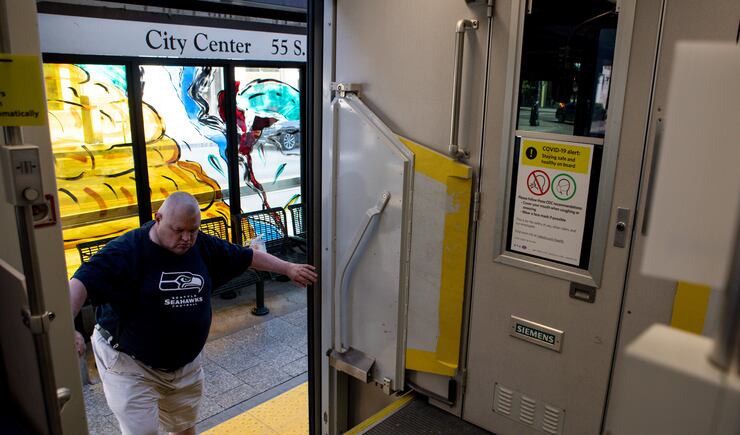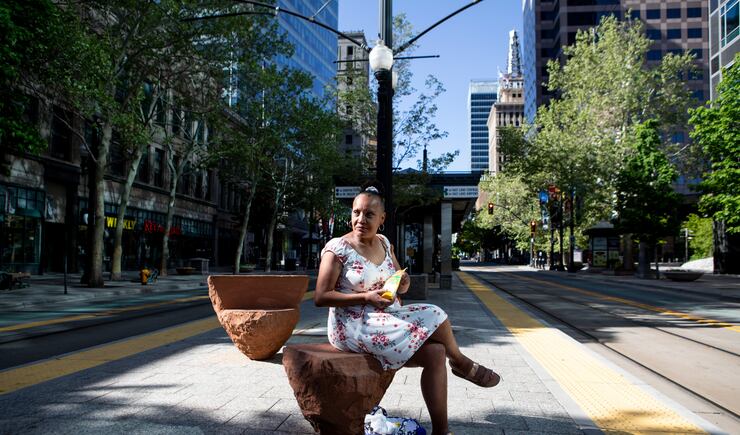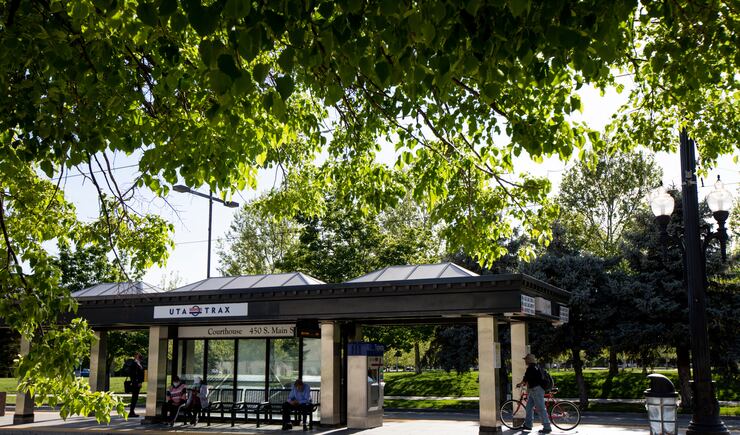SALT LAKE CITY — Usha Bala spent a recent morning on State Street, handing out masks to people getting on and off the bus at Utah Transit Authority’s 355 South bus stop.
“Any time we do an event and we can give some of our time and be part of the community, I love it,” said Bala, a strategic culture partner for UTA.
Bala was one of over a dozen UTA employees that volunteered Thursday “to thank everyone who has relied upon mass transit for essential trips during the COVID-19 pandemic,” the agency said in a news release. It’s a message transit officials hope can begin to lure riders back to buses and trains.
Earlier this week, UTA’s board of trustees met to discuss plans to move forward amid the pandemic during an online meeting. The agency began scaling back some of its services on March 11, the same day the World Health Organization officially classified the spread of COVID-19 as a pandemic, and ridership quickly plummeted with the ensuing state directives for people to stay home and the closing of nonessential businesses.
Although data suggests the decline has flattened since mid-April, ridership for bus routes is down 70%, TRAX is off 75% and FrontRunner is seeing 86% fewer riders, according to Eddie Cummins, UTA’s chief operating officer. The transit authority’s cash flow has taken a subsequent hit, and on Wednesday Bob Biles, UTA vice president of finance, said passenger revenue was down $1.2 million in March, or about 25% from previous years.
Biles also estimated March revenue from sales tax — how the UTA generates the majority of its income — is down between 15% and 20% when compared to 2019.
Although Biles did not yet have April’s figures during the meeting, he said he expects revenue to continue to decline.
Executive Director Carolyn Gonot pointed out the decrease comes when UTA is operating at roughly 60% of capacity.
UTA officials discussed what they hope is a comprehensive recovery plan that includes regaining normal ridership, achieving financial stability and rebuilding community confidence.
The agency is planning to launch a series of surveys for its employees and customers to gauge how to effectively rebuild its ridership.
“Since this pandemic began we’ve been in reactionary mode. But we really feel like now it’s time to start thinking about moving forward,” Cummins said, adding that the “moving forward” piece would adhere to Gov. Gary Herbert’s Utah Leads Together plan.
Gonot said UTA is “looking at whether there are capital improvements we have to make,” which could include changing the seats from a fabric material to plastic or vinyl that would be easier to clean.
It may be some time before UTA will see ridership return to normal — despite Herbert’s recent easing of restrictions, the prospect of getting on a crowded bus is still an uneasy thought for many. But even with the pandemic, nearly 42,000 people use UTA services each day, according to agency data.
In 19 locations scattered throughout Box Elder, Weber, Davis, Salt Lake, Tooele and Utah counties, employees handed out around 450 masks, according to UTA spokesman Carl Arky.
“I just love volunteering,” Bala said, pausing to hand a mask to Kevin Schoenfeld as he waited for a bus to Ogden. Schoenfeld, who has a medical condition that prevents him from driving, rides the train or bus every day.
“I don’t know where I’d be if the UTA wasn’t in service. I’d be lost,” he said.
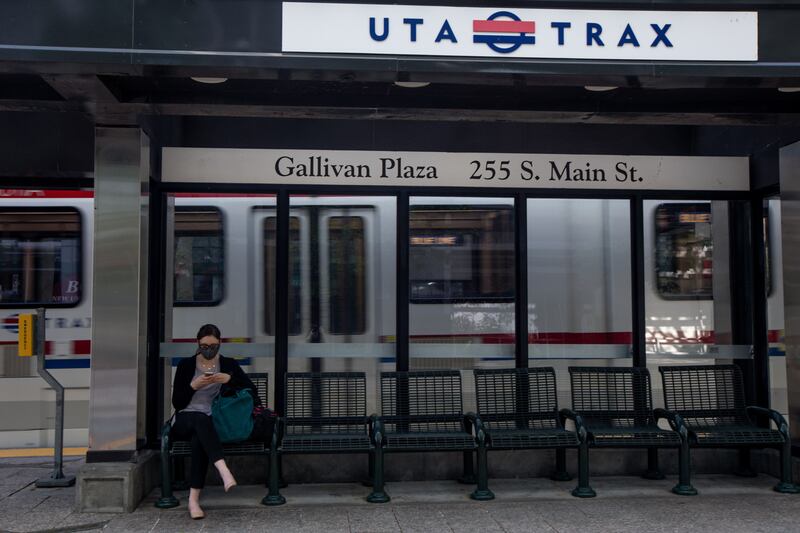
“Without UTA I’d be riding my bike more or walking I guess,” he said. “To be honest, I don’t know. I never thought about it.”
Schoenfeld has used public transit daily long before the pandemic. But now he gets an uneasy feeling when he gets on the 470 line to Ogden — a route that was packed just a few months ago — and only sees one or two other passengers. He said it almost feels like he’s doing something wrong.
“It’s very weird to get on the bus and there’s only two, three or four people,” he said. “It’s the same on the train, you get on and there’s hardly anyone there.”
Schoenfeld said he’s reassured by UTA’s efforts to improve safety — like handing out masks, disinfecting each bus and installing plexiglass shields in buses to protect operators.
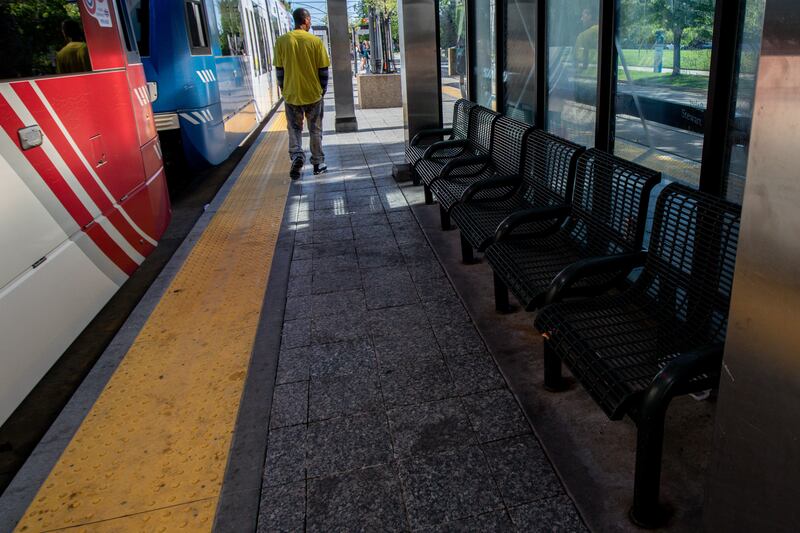
Carlton Christensen, chairman of the UTA board of trustees, said while he wishes the circumstances were different, the pandemic offers a rare opportunity to focus on people like Schoenfeld and how the organization can cater to people that depend on public transit.
“This really does give you a pretty reflective snapshot of the core group that absolutely depends on our service,” Christensen said.
